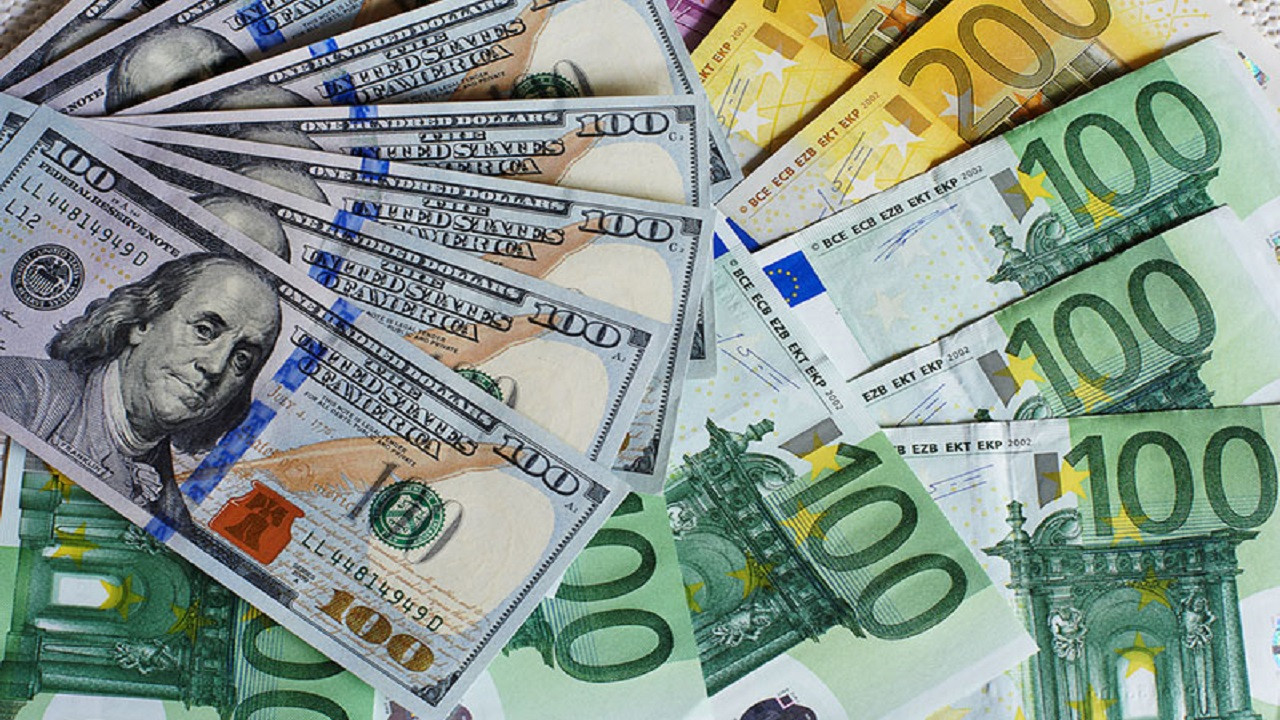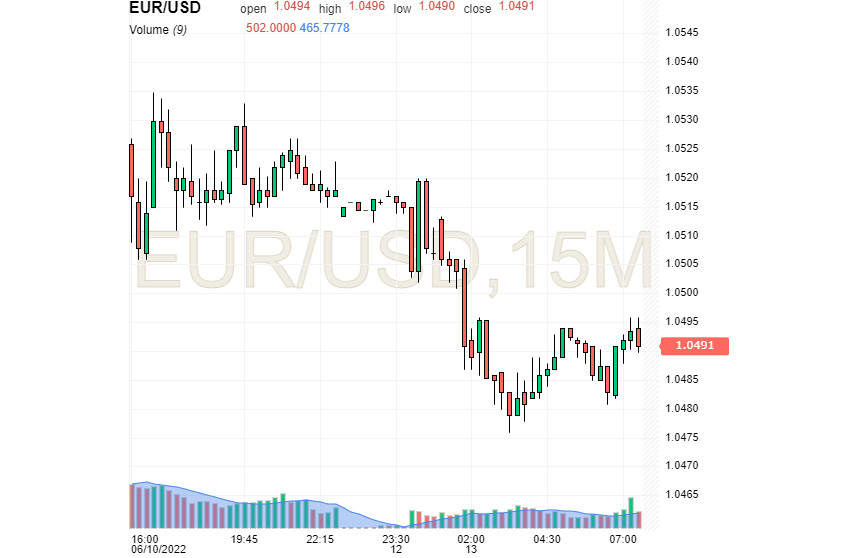
The US dollar advanced early on Monday, overtaking the Japanese yen and particularly the euro. As the US dollar remains dominant, EUR is trying to recover lost ground without much success.
USD surged at the end of last week and extended its upside movement on Monday, supported by mixed inflation data, which pushed Treasury yields upwards. The yield of 10-year US Treasury bonds reached 3.2% on Monday, June 13, after rising by 12 basis points on Friday amid surging inflation in the US. As a result, the market has priced in a more aggressive Fed rate hike than previously expected.
Market expectations of an excessively hawkish move by the Federal Reserve have pushed the US dollar to new highs against the Japanese yen and the euro. The US dollar index, which tracks the greenback against a basket of 6 major currencies, jumped by 0.3% to 104.52, the highest level in 4 weeks.
As a result, EUR lost 0.3% and reached 1.0483. The euro is plagued by misfortune, despite all efforts by the ECB to stabilize both the currency and the eurozone's economy. EUR/USD traded near 1.0491 early on Monday. However, many experts think the pair has significant upside potential, with its nearest target being 1,1000.

At the end of last week, the euro advanced on statements by ECB policymakers, but slumped immediately after a press conference of the ECB's president Christine Lagarde. Investors were wary that the regulator's interest rate increase could lead to fragmentation and were not satisfied by the proposed measures against it. Investors selling the euro were also worried that the ECB lacked a clear policy plan. "This topic will be discussed in more detail in July, and we are very sceptical of the view that fragmentation risks will become a driver of euro performance going forward," Lee Hardman, currency analyst at MUFG said.
According to MUFG, the ECB would likely increase the interest rate by 25 basis points in July and 50 basis points in September. It would then be followed by 25 point increases at the remaining policy meetings in 2022. The regulator must meet these expectations to give support to the euro. "If financial conditions do not tighten further, then there is certainly scope for the ECB to hike by at least 125 bps by year-end," Hardman noted, saying that the interest rate differential between the EU and the US is starting to move into a direction that favors a stronger euro. However, at this point the European currency is under significant pressure and can barely withstand its current slump.
This week, market players are focused on monetary tightening plans by central banks, which strive to bring inflation under control. Both the Federal Reserve and the Bank of England are expected to hike interest rates at their policy meetings due to disappointing macroeconomic data. According to the latest data, inflation in the US accelerated to 8.6% y/y in May from 8.3% in April, reaching the highest level in 40 years and indicating that price growth is far from peaking. Market players reassessed the Fed's future plans, as the yield of US Treasury bonds increased, and Fed funds rate futures hit a new high of 3.23%.
According to an outlook by Barclays, the Federal Reserve could increase interest rates by 0.75% at its meeting on Wednesday, June 15. "The US central bank now has good reason to surprise markets by hiking more aggressively than expected in June," the outlook said, noting that the US central bank had no other choice. The bank's FX strategists increased its Fed funds rate forecast by 25 basis points - the terminal rate is expected to reach 3.00-3.25% by the beginning of 2023. While the Federal Reserve usually avoids unexpected moves such as a 75 point hike, this week could be different, Barclay's analysts say. Amid accelerating inflation, the US regulator has no other option to bring rising prices under control.





















